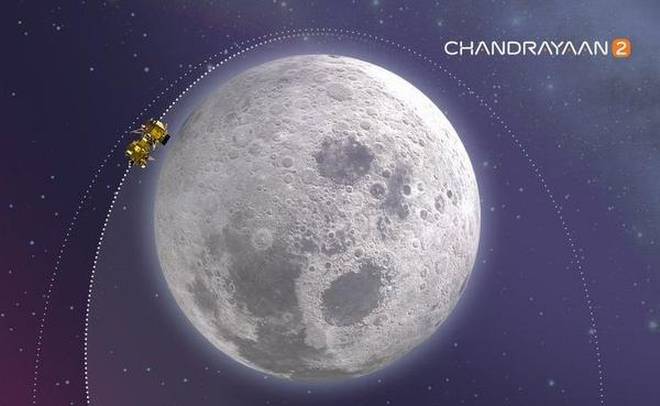Isro’s Chandrayaan-2 successfully enters Moon’s orbit
 An artist’s impression of the Chandrayaan-2 entering the Moon’s orbit. (Image credit: Isro)
An artist’s impression of the Chandrayaan-2 entering the Moon’s orbit. (Image credit: Isro)
New Delhi: The Chandrayaan-2 spacecraft, on Tuesday, moved into the lunar orbit, almost after 30 days of its July 22 launch. It started going around the Moon, in preparation for a landing, on September 7.
The chairman of the Indian Space Research Organization, K Sivan, in an interaction with reporters, said, “Today, the Chandrayaan-2 mission crossed a major milestone. The lunar orbit insertion manoeuvre carried out at about 9 am, for about 30 minutes, precisely injected Chandrayaan-2 in a pre-defined orbit (around the Moon), in a perfect way … All the systems onboard are functioning normally. The spacecraft is in perfect health.”
The spacecraft has been injected into an elliptical orbit which would be changed through another series of manoeuvres, to let the spacecraft eventually attain a near-circular orbit of 100km around the Moon.
At this point, the Vikram lander, along with the small Pragyaan rover, is slated to separate from the main composite module and start its incremental descent towards the Moon’s surface. The separation is scheduled for September 4, following which the lander and rover would position themselves in a lower orbit, while the landing is planned to take place at 1.40am IST on September 7. Meanwhile, the main spacecraft module would continue to go around the Moon in its orbit for at least one year.
Sivan said. “Because Vikram is meant to land in the region around the south pole of the Moon, Chandrayaan-2 needed to attain an orbit that had an inclination of 90 degrees with respect to the lunar equator.”
He added, “To give you an idea of the precision required for today’s manoeuvre, if the velocity of the spacecraft was different (from 10.9km per second, or 39,240km per hour, at the initial point) by even 10cm/sec (0.36km per hour), the spacecraft would not have been able to attain the required inclination in lunar orbit. It would have been off by at least seven degrees.”
Sivan, while further explaining, said, “After separating, Vikram would not immediately land on the Moon’s surface. Instead, it would go around the Moon for three days, during which all its parameters would be checked. Its powered descent would start in the early morning of September 7, around 1.40am, and it is expected to land within 15 minutes.




Leave Your Response